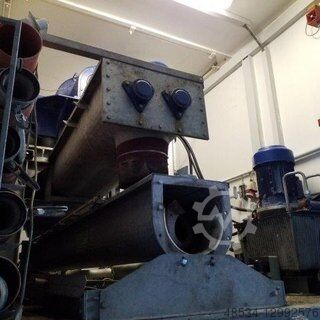Used Grain Drain for sale (1,765)
 Gladbeck
Gladbeck Decanter Drainage System
HillerDECAPRESS DP45-422 MOBIL
 Voerde
Voerde Drainage plant REWA
REWARewa 500
 Gladbeck
Gladbeck Drainage system decanter mobile
HillerDP51 mobil

+44 20 806 810 84
 Voerde (Niederrhein)
Voerde (Niederrhein) Decanter Drainage System
GuinardD3LLC30BHP
 Niederhelfenschwil
Niederhelfenschwil Pointing Hammering Machine
AVS-100
Discover more used machines
 Netherlands
Netherlands Baler 80 t with pecial press ram for pressing ‘difficult’ materials
Avermann Maschinenfabrik GmbH & Co. KGAVOS 1410-45/80
 Sittensen
Sittensen Tipper semitrailer
SCHMITZ CARGOBULLSKI 24 SL 9.6, Alu, 50m³, Alu-Felgen, Luft-Lift
 Lichtenfels
Lichtenfels Tipper semitrailer
RENDERS2x Lenkachse, Ackerbereifung, Alu-Kipper 48 cbm
 France
France Wheeled Excavator
TerexTw 85 Schaeff with 3 buckets and forks
 Janville
Janville Oskar Krieger Maschinen Fondo Mat Universal 500
Oskar Krieger Maschinen Fondo Mat Universal 500
 Schwebheim
Schwebheim Tipper trailer
MösleinTTD 11 Weiß neuer Tandem 3- Seitenkipper Tieflader-- Neufahrzeug --
 Janville
Janville CICS
CICS
 Schwebheim
Schwebheim Tipper trailer
MösleinTTD11 weiß neuer Tandem 3- Seitenkipper Tieflader-- Neufahrzeug --
 Janville
Janville Industrial autoclave
 Janville
Janville Olsa Speedycream 750
OlsaSpeedycream 750
 Janville
Janville Packing machine
Ernens nestor
 Janville
Janville Storage medium
Brouillon Process 884-H-EAU
 Janville
Janville Concrete machine
 Janville
Janville Filling machine
NovaNS 574/4
 Janville
Janville Sevin
Sevin
 Janville
Janville Then
Then
 Janville
Janville Martin EPSILON 2-6D
MartinEPSILON 2-6D
 Janville
Janville Storage medium
Industrial storage tanks
 Janville
Janville Storage medium
 Janville
Janville Storage medium
Walker
Used Grain Drain (1,765)
Search Machineseeker now with more than 200,000 used machines:Browse through the most popular machine descriptions:
This may be of interest to you

+44 20 806 810 84

































































































































































































































































































